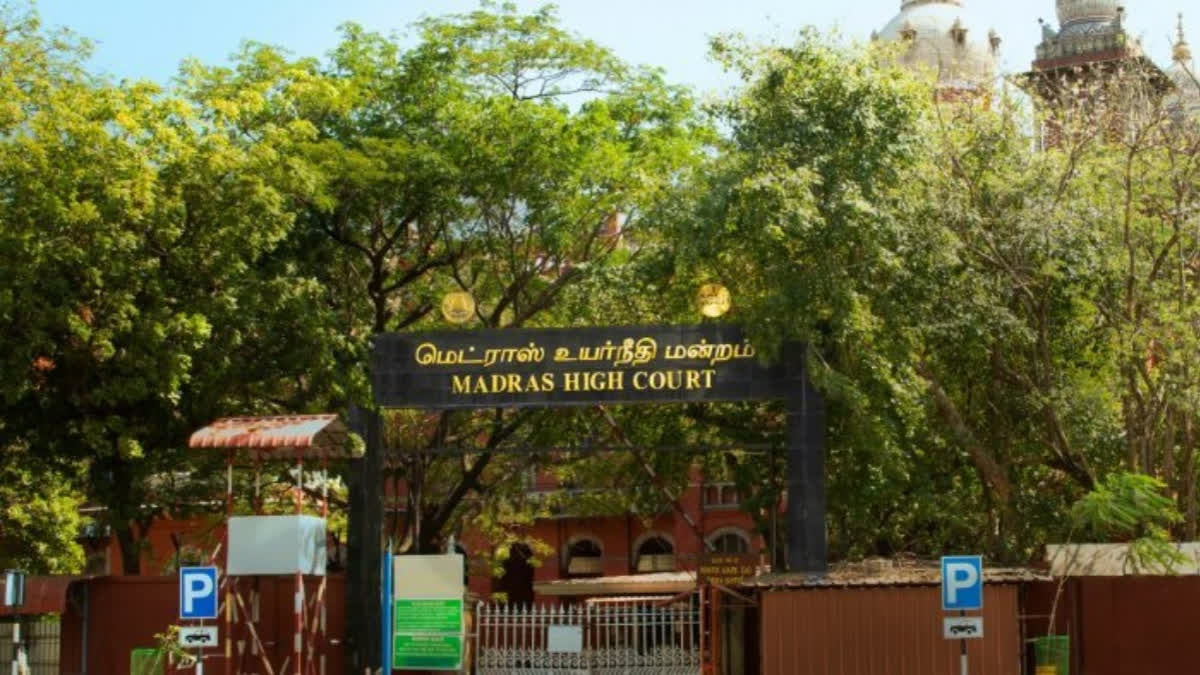New Delhi: The Madras High Court's recent direction to the Union Ministry of Culture to remove an over 300-year-old legally protected tomb from the court complex has invited sharp criticism from a section of top archaeologists of the country. The ASI is now preparing to file an appeal against the order in the division bench of the HC.
The monument in question is a tomb built by Elihu Yale, the Governor of Madras from 1687 to 1692, in the memory of his son, David Yale and his friend Joseph Hynmer. After his return to Britain, Elihu Yale contributed a substantial amount of his fortune which he had amassed in India to a "Collegiate School" which was later renamed Yale College and then to Yale University, as it is currently known, and is reckoned among the world's top educational institutions.
The Archaeological Survey of India (ASI) declared the tomb a 'protected monument' for the first time in 1921 under the then Ancient monuments Preservation Act, 1904. After Independence, it was carried over as a 'protected monument' under the Ancient and Historical Monuments and Archaeological Sites and Remains (Declaration of National Importance) Act, 1951.
The relocation of the tomb, located in the Madras Law College compound, has been proposed to pave the way for a multi-level parking to cater to the surge in number of vehicles occasioned by the increase in number of advocates, staff, litigants, government officials, etc. The tomb comes in the way of development activities because according to the law, no construction activities can be carried out within the 100 metres of a protected monument.
The Madras HC, which passed the relocation order on a petition of an individual named B Manoharan, is of the view that the tomb has neither archaeological value or historical importance, nor an artistic masterpiece that warrants its maintenance as a protected monument. The court thus held that the developmental activities necessitated in the current day scenario cannot be brushed aside for merely housing the cemetery of individuals, who have no historical significance, except for being the resting ground of the son of the then Governor of the East India Company.
During the hearing of the case, the ASI opposed the relocation on the ground that it is against Article 49 of the constitution which assigns a responsibility to states to protect every monument or place or object of artistic or historic interest. Some renowned archaeologists have spoken against the order arguing the court doesn't have expertise to decide the artistic or the archaeological importance of a monument.
Dr M Nambirajan, Joint Director General (Retd), ASI, says the tomb is historically important as it was constructed by Ehilu Yale who founded the world famous Yale University and embodies in it the remnants of burial architecture of the British era of the late 17th century.
"Tombs of these times are usually simple and limited in ornamentation/decoration and are invariably inscribed. These tombs cannot be compared with elaborate architecture of places of worship, forts, Mughal tombs etc in deciding its historical, architectural or aesthetic importance /features," Dr Nambirajan said, adding, the matter should better be left to the Archaeological Officers, who are experts on these matters.
Dr GS Khwaja, another renowned archaeologist, said, "It is a very unfortunate order. The monument is protected under the act of parliament and the HC is not above the law. There is a laid down procedure under the act to remove the given protection to a monument and only a committee of experts with deep understanding of archaeology can take a call on it."
Archaeologists also say that one cannot pick and choose a monument for relocation as per its own need and convenience. Rather, it should be done in a comprehensive manner with the consultation of experts. "A framework should be drawn and within a given time frame, all the monuments provided protection in the pre-independence era should be reviewed in the best interest of the infrastructural development that needs to be taken up in the fast developing economy of the country," former ASI director for monuments and world heritage N Taher said.
The experts also say that the Madras High Court should not have passed such a judgement in case where the High Court itself is a beneficiary. "It is very sad that the Madras High Court, in order to create a car park for itself, has ordered the removal of a historical monument. The issue should have been referred to the Heritage Experts for their considered opinions rather," another well-known archaeologist, not wanting to be quoted said.
"The Supreme Court in the case of Rajeev Mankoti vs Secretary to the President has passed a detailed judgment, about the need to preserve, protect and maintain heritage for future generations, which the High Court at Madras appears to have overlooked completely," he added. Dr Nambirajan also feels that there are some offending observations made on the attitude of the authorities by the HC and the order, if not challenged, may lead to complex situations in future in similar cases all over the country.
"Therefore, I believe and hope that the authorities take a considered decision to challenge this order before a Bench of the Hon'ble High Court," he added. (PTI)



